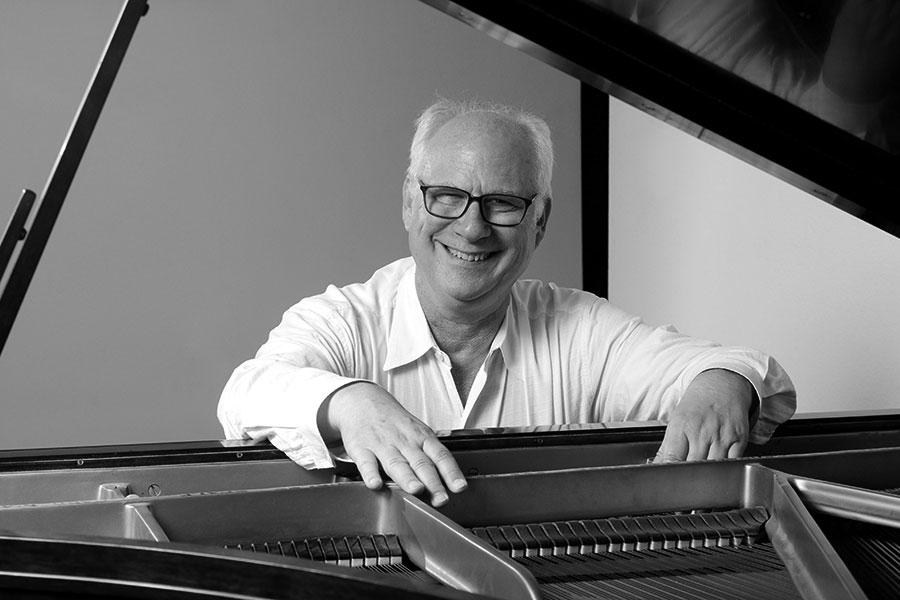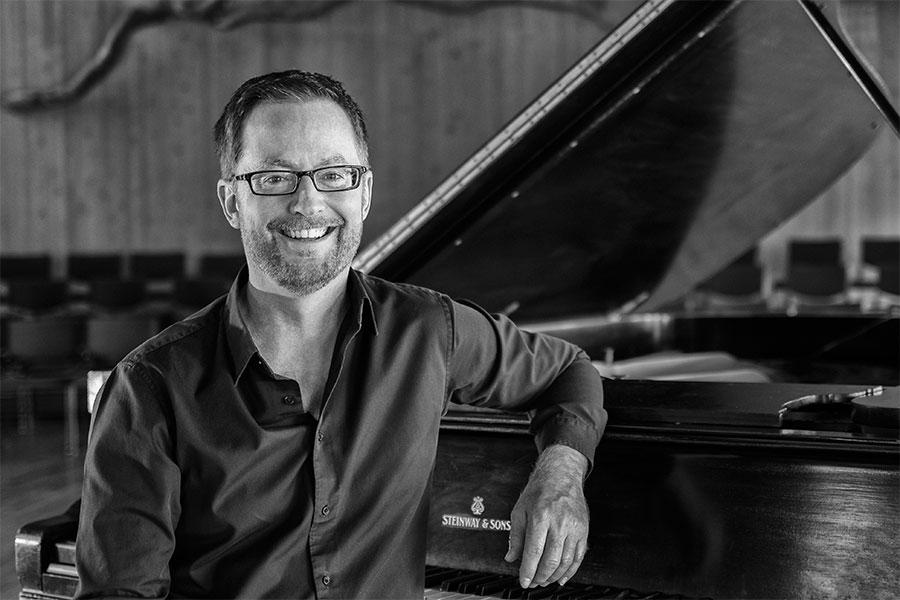Artistic Team

Mark Carlson, composer
Composer Mark Carlson’s lyrical, emotionally powerful, and stylistically unique music has earned him the admiration of audiences and musicians throughout the United States, Canada, Mexico, and Europe. A versatile composer, his approximately 100 works include art songs, chamber music, choral music, and concertos and other large ensemble works. One of his thirteen CDs, The Hall of Mirrors, was a winner of the Chamber Music America/WQXR Record Awards for 2001. He teaches music theory and composition at UCLA and also taught at Santa Monica College for 15 years. He is the Founder and Artistic Director of Pacific Serenades, which was given a Letter of Distinction by New Music, USA, in 2013, for its significant contribution to the field of contemporary American music.

Bruce Olstad, librettist
Bruce Olstad has served as conductor, chorusmaster, pianist, and vocal coach throughout the San Francisco Bay Area, for organizations including the Sacramento Philharmonic & Opera, Livermore Valley Opera, West Bay Opera, Opera San Jose, West Edge Opera, Festival Opera, Open Opera, and Opera Bravura. He served as chorus director for Andrea Bocelli’s 2015 concert appearance in Sacramento, and conducted the world premiere of composer Lisa Scola Prosek’s chamber opera, The Lariat. He is a Teaching Artist for the San Francisco Opera Guild, and serves as Music Director of the Unitarian Universalist Church of Palo Alto. He maintains a private vocal coaching studio, and serves as pianist for the studios of numerous voice teachers, including Susanne Mentzer.
Read MoreA new opera based on:
– a story set in the 1650s, among the Puritan settlers of the Massachusetts Bay Colony (modern day Boston).
– a novel written in the 1850s.
– a book read and loved by generations of readers since its first publishing.
But why?
 Why should we care? Why has this story captivated us for almost 200 years? What does a story about 17th Century, Puritan immigrants to Boston have to do with our modern times? After all, these characters seem hell-bent on worshipping a punishing and vengeful God, and then creating a strict civil society based on their beliefs. Today, however, few believe that adultery and birth out of wedlock are “sins” worthy of eternal damnation, much less exclusion from the society of others that all human beings depend on. Yet these, in fact, are the themes on the surface of the story—themes that would seem to have little relevance to our modern world.
Why should we care? Why has this story captivated us for almost 200 years? What does a story about 17th Century, Puritan immigrants to Boston have to do with our modern times? After all, these characters seem hell-bent on worshipping a punishing and vengeful God, and then creating a strict civil society based on their beliefs. Today, however, few believe that adultery and birth out of wedlock are “sins” worthy of eternal damnation, much less exclusion from the society of others that all human beings depend on. Yet these, in fact, are the themes on the surface of the story—themes that would seem to have little relevance to our modern world.
On a much deeper level, though, The Scarlet Letter deals with themes well below the surface, timeless themes that are still very much with us today. All one need do is to read a recent news story or surf the web to see endless examples: Ashley Madison, Ted Haggard, Bernie Madoff, and the list goes on and on. The clash between public morality and private secrets is alive and well. Self-righteousness is alive and well, as is the widespread desire to live within strict boundaries passed down from one generation to the next. Alive and well, too, are love—love so deep that it does not wane—and fierce loyalty and the willingness to stand up to oppression, no matter the personal cost.
But The Scarlet Letter transcends even these deeper themes to speak to the very heart of what it is to be human—which of course is why we still love it. It is, at its heart, not merely the story of an adulteress who conceives and bears a child out of wedlock, nor of the perhaps cowardly father who uses his social prominence to hide in plain sight, nor of the vengeful husband whose obsession with revealing the truth literally transforms him into the very face of evil. Or rather, it is about all of these people, but also through them, about all of us. For The Scarlet Letter is really about the shared fallibility of human nature. It reminds us that this shared fallibility is the very thing that unites us. It warns us that the extent to which we are able to deal honestly and openly with our own transgressions, and allow this to connect us to the rest of our beautiful, flawed fellow mankind with compassion and kindness, will determine the quality of our life here on Earth.
Above all this towers the scarlet letter itself—the fancifully embroidered letter ‘A’ that Hester wears with fierceness and even a kind of pride. Seen in this light, it is not only the outward symbol of her individual transgression, but also the powerful, tangible symbol of our shared, flawed humanity. Thus, the scarlet “A” does not stand merely for “Adulteress”—it truly stands for “All.”
Contact
The Scarlet Letter Project
P.O. Box 5214
San Jose, CA 95150
scarletletteropera@gmail.com
The Scarlet Letter is a specific project of Bodhi Tree Concerts North, a 501(c)(3) non-profit organization. Donations are tax-deductible to the full extent provided by law.

